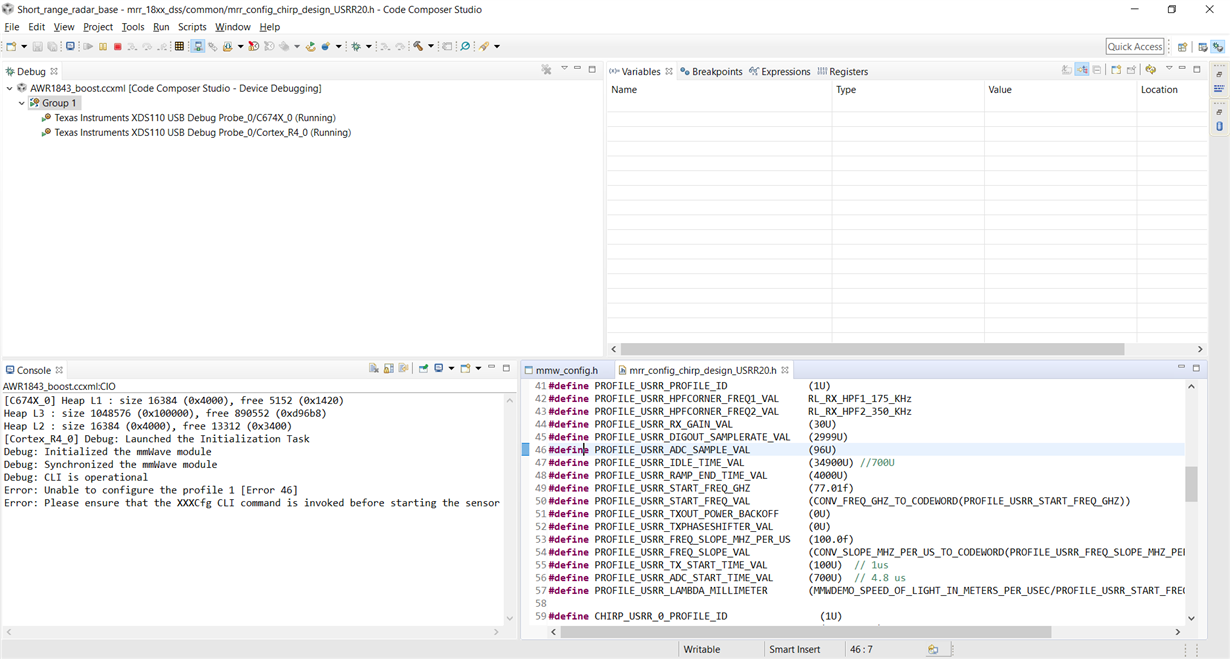We recently ran into an issue with our AWR1843 hardware version that uses the TI ODS antenna pattern, see below. We’re running a modified version of the MRR demo that TI provided. We had to modify the angle estimation to work with the ODS antenna and we’re now trying to change the chirp profile to determine the effects in distinct scenarios.
Starting with the USRR parameters for our base, we tried to modify the sampling rate (and the ramp end time to compensate), but we keep running into a RL_RET_CODE_PF_FREQ_SLOPE_1NVAL_IN error (cli error 46). We ensured that the numbers work to the best of our ability, but there aren’t any more details about this error other than the frequency slope being invalid. Given that the actual slope is unchanged, we are wondering if TI has any more details or ways to debug this issue.
For reference, we took the USRR20.h configuration, and changed the PROFILE_USRR_DIGOUT_SAMPLERATE_VAL to 5376U and the PROFILE_USRR_RAMP_END_TIME_VAL to 13300U. This is the error that we got from the debugger. We interpreted the error as the RL_RET_CODE_PF_FREQ_SLOPE_1NVAL_IN by referencing the AW1xx_Radar_Interface_Control Document: https://e2e.ti.com/cfs-file/__key/communityserver-discussions-components-files/1023/AWR1xx_5F00_Radar_5F00_Interface_5F00_Control.pdf. This error is thrown by rlSetProfileConfig API function, which returns a value of type rlReturnVal_t, described in section 10.6.7 of this document.


